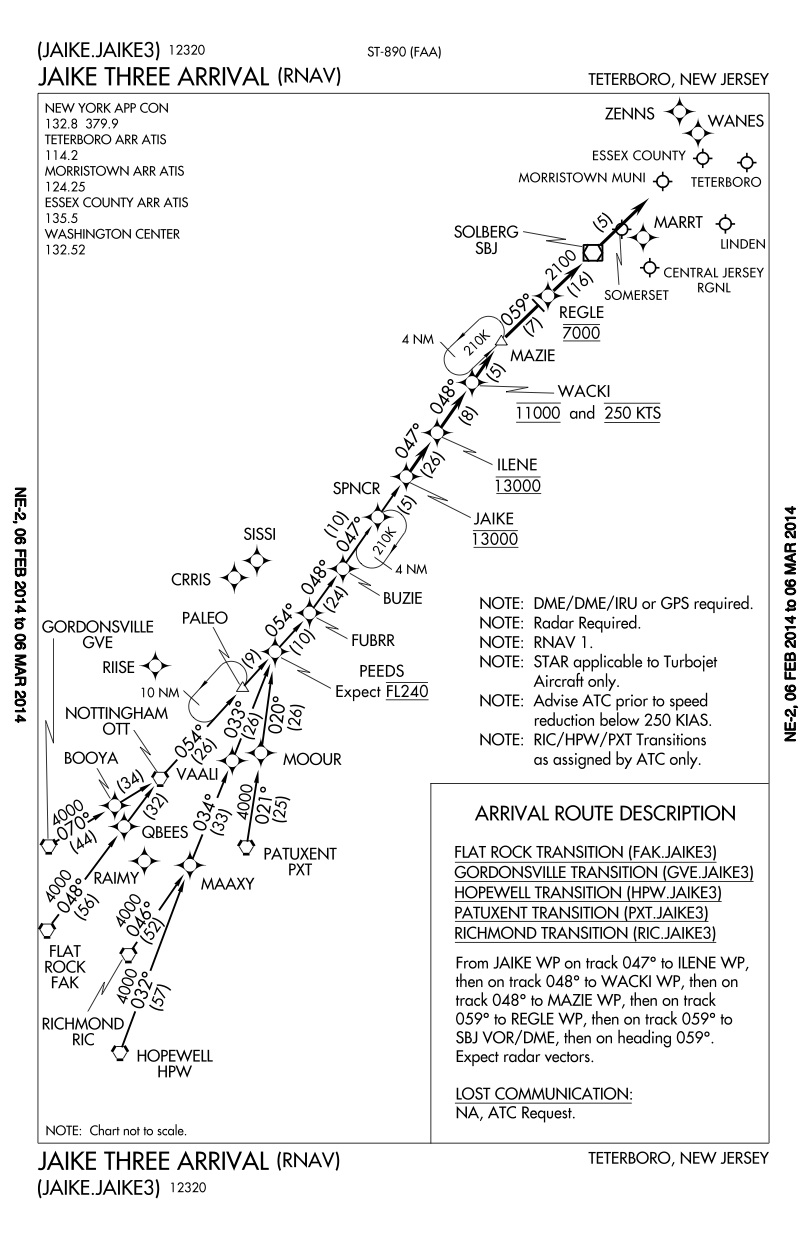The "DESCEND VIA" clearance is described in FAA order 7110.65U (pdf) Section 4-5-7 paragraph h, which defines:
h. Instructions to vertically navigate on a STAR/RNAV STAR/FMSP with published >restrictions.
PHRASEOLOGY-
DESCEND VIA (STAR/RNAV STAR/FMSP name and number)
TERMINAL: DESCEND VIA (STAR/RNAV STAR/FMSP name and number and runway number).
EXAMPLE-
“Descend via the Mudde One Arrival.”
“Cross JCT at flight level two four zero, then descend via the Coast Two >Arrival.”
TERMINAL: “Descend via the Lendy One Arrival, Runway 22 left.”
This instruction authorizes the pilot to navigate the STAR laterally as published and to navigate vertically to meet all published altitude restrictions.
Clearance to “descend via” authorizes pilots:
- To vertically and laterally navigate on a STAR/RNAV STAR/FMSP.
- When cleared to a waypoint depicted on a STAR/RNAV STAR/FMSP, to descend from a previously assigned altitude at pilot's discretion to the altitude depicted for that waypoint, and once established on the depicted arrival, to navigate laterally and vertically to meet all published restrictions. ATC is responsible for obstacle clearance when issuing a “descend via” clearance from a previously assigned altitude.
Though speed restrictions are not specifically addressed in the above paragraph, it does note that you will meet "all published restrictions" to include speed restrictions. This is supported by a later note:
EXAMPLE-
“United 454 descend via the Haris One Arrival, except after Bruno, maintain one zero thousand.”
NOTE-
The aircraft should track laterally and vertically on the Haris One Arrival and should descend so as to comply with all speed and altitude restrictions until reaching Bruno and then maintain 10,000. Upon reaching 10,000, aircraft should maintain 10,000 until cleared by ATC to continue to descend.
This example and note pertain to modifications to a published altitude, but the note establishes that you comply with all published altitudes and speeds when flying the procedure as published.
Furthermore, InFO 12014 explicitly states:
Published speed restrictions are always mandatory. Published speed must be complied with regardless of the use of “Climb/Descend Via” clearance.
For the example of the JAIKE 3 Arrival, the clearance
N1234, Descend VIA the JAIKE THREE ARRIVAL
will be issued if you are already established on the arrival laterally and authorizes you do follow the published route and altitudes. Assuming the FAK transition is your cleared route when you receive the descend via clearance, you would fly the lateral route
FAK QBEES VAALI PALEO PEEDS FUBRR BUZIE SPNCR JAIKE ILENE WACKI REGLE SBJ
and you would descend at your discretion to be at 13,000 ft at JAIKE, at 13,000 ft at ILENE, at 11,000 ft at WACKI (and at 250 kts) and 7000 ft at REGLE. You descend to and cross the fixes at these altitudes because you have been authorized to vertically navigate the STAR via the "DESCEND VIA" clearance.
NOTE: This arrival contains an "EXPECT" altitude and the controller should not issue a DESCEND VIA clearance until you are past this fix unless you gives you specific instructions as in:
N1234 cross PEEDS at FL240 then descend via the JAIKE 3 arrival
If the controller at any time issues an instruction e.g.
N1234, Descend and maintain 7000
then:
In the USA
then you would continue to navigate laterally on the STAR but would descend to 7000 ft, disregarding any published altitudes on the STAR. You are no longer authorized to navigate vertically on the STAR. If the controller requires you to still cross certain fixes at certain altitudes, they will specify those crossing restrictions in the descent clerance, e.g.
N1234 Cross WACKI at 11000 250 kts then descend and maintain 7000 ft.
In Cadanda / ICAO rules
you shall continue to meet all published crossing altitudes on your descent to your cleared altitude. For reference on this difference, see FAA InFO 12003

